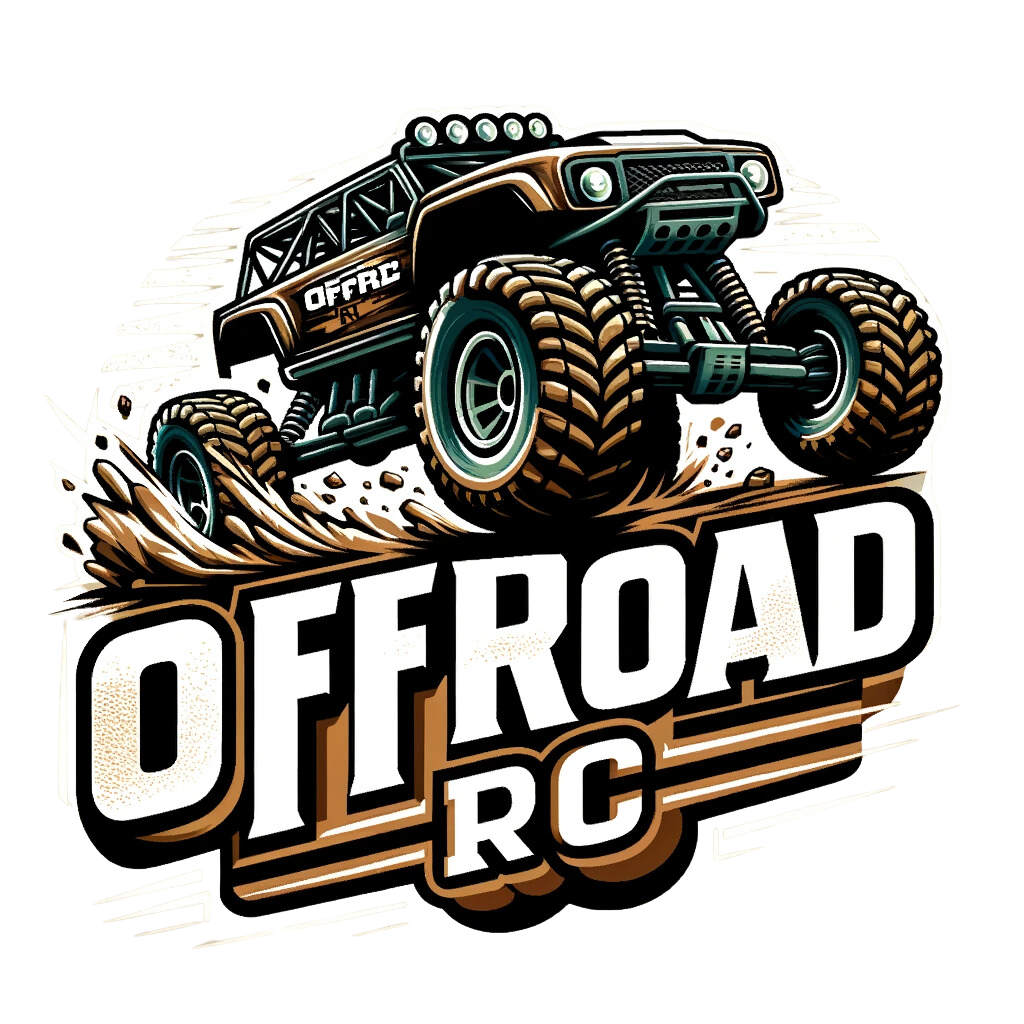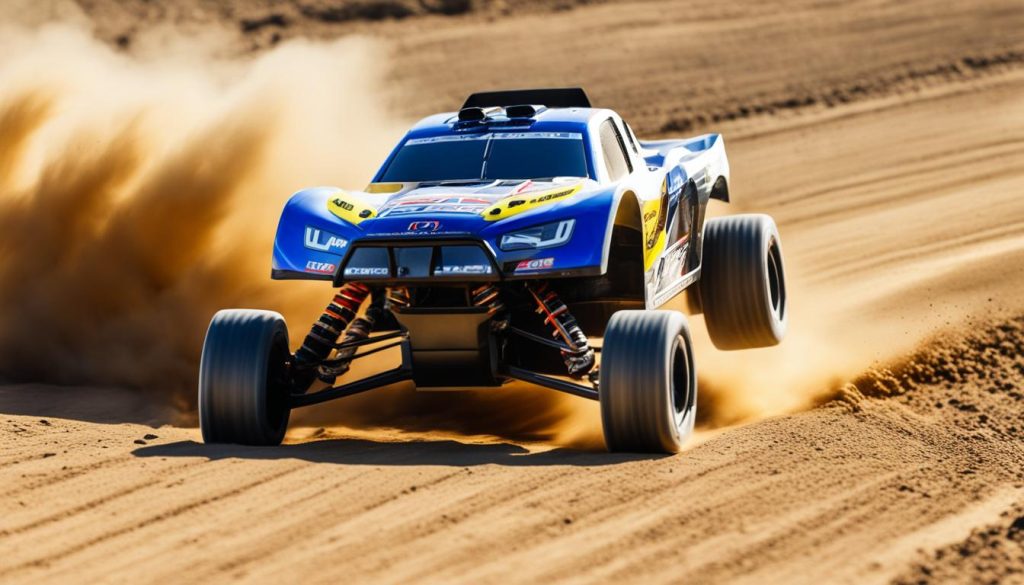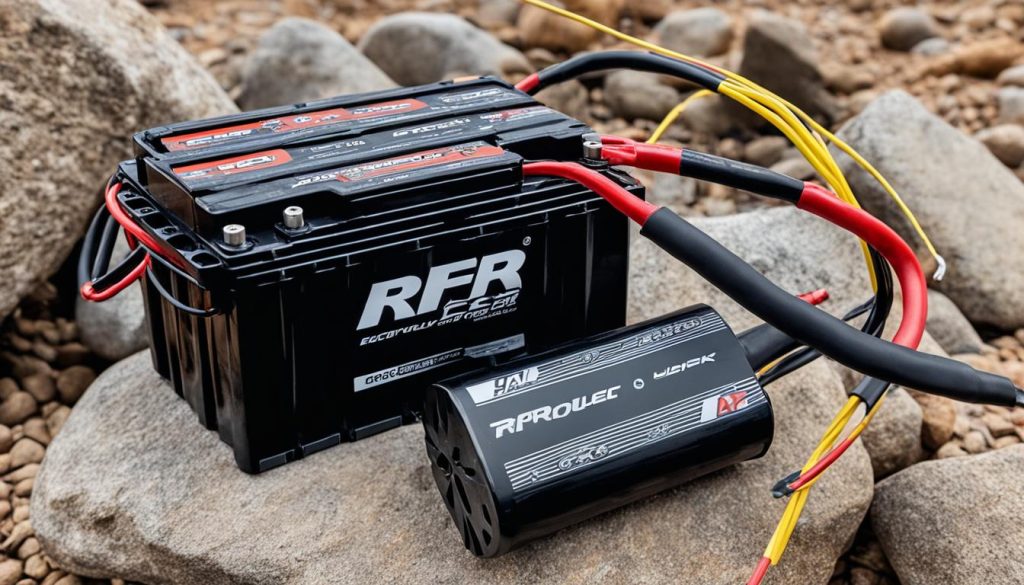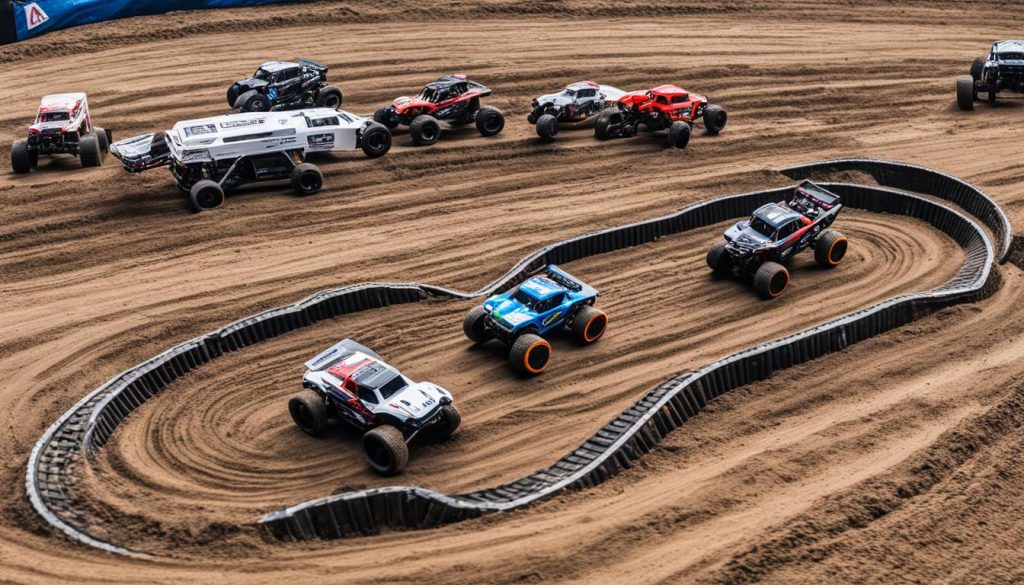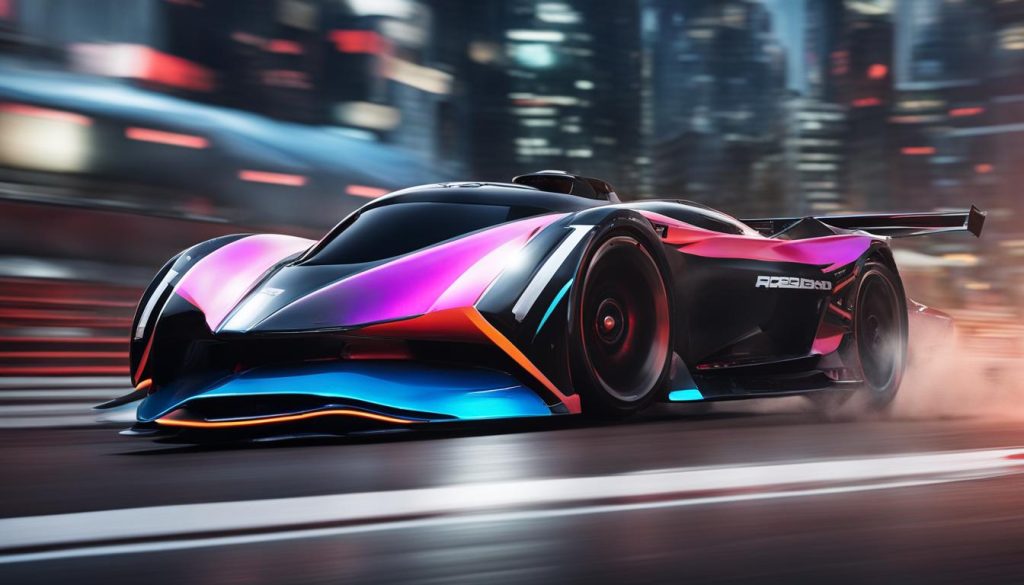Have you ever wondered how fast a 2.4GHz RC car can go? These miniature vehicles provide hours of entertainment for hobbyists of all ages. Whether you’re a beginner or a seasoned enthusiast, knowing the speed capabilities of your RC car can enhance your overall experience.
The speed of a 2.4GHz RC car can vary depending on several factors, including price, manufacturer, and modifications. Lower-priced models typically reach speeds of 10-35 mph, while higher-priced vehicles can achieve top speeds of 50-70 mph. For those who crave even more excitement, modified RC cars have been known to exceed 100 mph.
The 2.4GHz frequency, commonly used in the control of RC cars, allows for the operation of multiple cars simultaneously without interference. This ensures a seamless and enjoyable experience for RC car enthusiasts at races and gatherings.
Key Takeaways:
- The speed of a 2.4GHz RC car can range from 10-35 mph for lower-priced models.
- Higher-priced RC cars can achieve top speeds of 50-70 mph, with some modified vehicles exceeding 100 mph.
- The 2.4GHz frequency allows for the control of multiple cars without interference.
How Does 2.4 GHz Frequency Control RC Cars?
RC cars are controlled using transmitters that send commands to the car’s receiver. The 2.4 GHz frequency is commonly used to control RC cars, providing a reliable and efficient means of communication. This frequency allows for the control of multiple cars simultaneously without the need to manually change frequencies, making it ideal for racing or group activities.
When using a 2.4 GHz transmitter, it is crucial to pair it with the receiver of the RC car. This pairing ensures that the transmitter’s signals are correctly received by the car’s receiver. Once paired, no other radio equipment can interfere with the functioning of the RC car, providing a secure and uninterrupted control experience.
Compared to older frequency options, the 2.4 GHz frequency offers several advantages. It is less susceptible to interference from other radio devices, such as Wi-Fi routers or cordless phones, ensuring a smooth and reliable control experience. Additionally, the use of 2.4 GHz frequency eliminates the need for frequency crystals, simplifying the control process and reducing the risk of interference.
The 2.4 GHz frequency is known for its wide bandwidth, allowing for consistent and responsive control of RC cars. The signals transmitted at this frequency have a longer range, ensuring that you can maintain control over your RC car even at a considerable distance.
With the 2.4 GHz frequency, you can enjoy the freedom of controlling multiple RC cars simultaneously without interference. Whether you’re racing against friends or organizing a group activity, the 2.4 GHz frequency ensures that each car receives its commands without any cross-interference.
To summarize, the 2.4 GHz frequency is a reliable and efficient option for controlling RC cars. Its ability to handle multiple cars, resistance to interference, and long-range capabilities make it a popular choice among RC enthusiasts.
Would you like to learn more about other factors affecting the speed and performance of 2.4GHz RC cars? Check out the next section to discover how various modifications can enhance their capabilities.
Factors Affecting the Speed of 2.4GHz RC Cars
When it comes to the speed of 2.4GHz RC cars, several factors come into play. Understanding these factors can help you maximize the speed and performance of your RC car. Let’s take a closer look at the key factors that influence the speed of 2.4GHz RC cars.
RC Car Modifications
One of the most significant factors that can boost the speed of your 2.4GHz RC car is making modifications to the car itself. Upgrading to a brushless motor is a popular modification choice, as brushless motors offer higher efficiency and reduced friction compared to brushed motors. This upgrade can significantly increase the speed and overall performance of your RC car.
Another modification that can impact speed is adjusting the gearing of your RC car. The gear ratio determines how power is transmitted from the motor to the wheels. By changing the size of the pinion gear and spur gear, you can fine-tune the acceleration and top speed of your RC car. Keep in mind that a smaller pinion gear and a larger spur gear will provide higher acceleration but lower top speed, while a larger pinion gear and a smaller spur gear will result in increased top speed with reduced acceleration.
Size and Weight
The size and weight of your RC car can also affect its speed and acceleration. Generally, smaller and lighter RC cars have better acceleration capabilities. This is because they have less mass to move, allowing for quicker bursts of speed. Larger RC cars, on the other hand, may have lower acceleration due to their increased weight. Striking the right balance between size and acceleration is crucial for achieving optimal speed.
Type of Motor and Batteries
The type of motor and batteries used in your 2.4GHz RC car can directly impact its speed. As mentioned earlier, upgrading to a brushless motor can provide a significant boost in speed. Brushless motors offer higher efficiency, lower heat generation, and quieter operation, making them ideal for high-speed RC cars.
In addition to the motor, the type of batteries you use can also affect the speed of your RC car. Lithium polymer (LiPo) batteries are a popular choice among RC enthusiasts due to their low resistance and higher runtime. These batteries deliver more power to the motor, resulting in increased speed and performance.
Surface Conditions
The surface on which you drive your 2.4GHz RC car can have a noticeable impact on its top speed. Smooth surfaces, such as asphalt or flat concrete, provide better traction and less rolling resistance, allowing for higher speeds. On the other hand, uneven surfaces, grass, or gravel can hinder speed due to increased friction and reduced grip.
Summary Table – Factors Affecting RC Car Speed
| Factor | Impact on Speed |
|---|---|
| RC Car Modifications | Significant potential for speed improvement through brushless motors and adjusted gearing |
| Size and Weight | Smaller and lighter RC cars generally have better acceleration; larger RC cars may have lower acceleration |
| Type of Motor | Brushless motors offer higher efficiency and increased speed compared to brushed motors |
| Batteries | Lithium polymer batteries (LiPo) provide more power and contribute to higher speed |
| Surface Conditions | Smooth surfaces allow for better traction and higher speeds, while uneven surfaces hinder speed |
By considering these factors and making appropriate adjustments, you can optimize the speed of your 2.4GHz RC car and experience thrilling high-speed races and exhilarating performances.
How to Measure the Speed of a 2.4GHz RC Car
Measuring the speed of your 2.4GHz RC car can be an exciting way to gauge its performance and compare it to other models. Fortunately, there are a couple of reliable methods you can use to determine the speed of your RC car accurately.
If your RC car doesn’t come with a specified maximum speed, you can employ a speedometer or a speed gun to measure its speed. These devices provide precise readings and allow you to track the car’s speed in real-time. By using a speedometer or speed gun, you can get an accurate and objective measure of your RC car’s performance.
Using a speedometer or speed gun is straightforward. Simply place the device near the track or area where your RC car will be running, and ensure that it has a clear line of sight to the car. Start the RC car and allow it to reach its top speed. The speedometer or speed gun will record and display the car’s speed, giving you valuable insights into its performance.
It’s important to note that while using a speedometer or speed gun provides accurate measurements, other factors such as gearing, motor type, and battery power can also impact your RC car’s speed. By understanding these factors and their influence on speed, you can make informed modifications and adjustments to optimize your RC car’s performance.
The Relationship Between Price and Speed of 2.4GHz RC Cars
When it comes to 2.4GHz RC cars, the price often indicates the level of speed they can achieve. Affordable RC cars, generally priced lower, tend to have lower top speeds ranging from 10-35 mph. On the other hand, hobby-grade RC cars, which are higher-priced, can reach much faster speeds, ranging from 50-70 mph.
While it is rare to find commercially available RC cars with speeds exceeding 100 mph, it is possible to achieve such extreme speeds through modifications. These modified RC cars often undergo extensive enhancements to unlock their full potential.
One of the factors that contribute to the increased speed of higher-priced RC cars is the presence of brushless motors. These motors are commonly found in hobby-grade RC cars and offer improved efficiency and reduced friction, resulting in faster speeds.
So, if you’re looking for a speedy RC car, investing in a higher-priced hobby-grade model with a brushless motor is more likely to satisfy your need for speed. However, keep in mind that there are several other factors, such as gearing, motor type, battery power, and surface conditions, that also play a role in determining the speed of your RC car.
| Price Range | Speed Range |
|---|---|
| Affordable RC cars | 10-35 mph |
| Hobby-grade RC cars | 50-70 mph |
The Impact of Gearing on the Speed of 2.4GHz RC Cars
Gearing plays a significant role in determining the speed and acceleration of your 2.4GHz RC car. By understanding how the pinion gear and spur gear interact and modifying the gear ratio, you can optimize your car’s performance.
The pinion gear is the smaller gear located on the motor shaft, while the spur gear is the larger gear that meshes with the pinion gear. These gears work together to transfer power from the motor to the wheels.
The Gear Ratio
The gear ratio is determined by the sizes of the pinion gear and spur gear. It represents the number of times the spur gear rotates compared to the pinion gear for a complete revolution of the wheels. A higher gear ratio means greater top speed but slower acceleration, while a lower gear ratio provides faster acceleration but reduces top speed.
Changing the gear ratio can have a profound effect on your RC car’s performance, allowing you to tailor its characteristics to your driving style or track conditions.
Optimizing Performance
To increase acceleration, you can use a smaller pinion gear and a larger spur gear. By doing so, you allow the motor to exert more force on the wheels, resulting in faster acceleration. However, this comes at the cost of reduced top speed.
If you desire higher top speed at the expense of acceleration, you can opt for a larger pinion gear and a smaller spur gear. This configuration allows the motor to spin at higher speeds, achieving greater velocity. However, bear in mind that the car’s ability to accelerate will be compromised.
The Importance of Balance
Finding the perfect gear ratio for your RC car is a balancing act. It depends on various factors such as track conditions, desired speed, and overall handling. Experimenting with different gear ratios and monitoring your car’s performance can help you find the ideal combination that suits your needs.
Remember, gearing is just one component that influences speed. Other factors like motor power, battery performance, and surface conditions also play a role in determining the overall speed and performance of your 2.4GHz RC car.
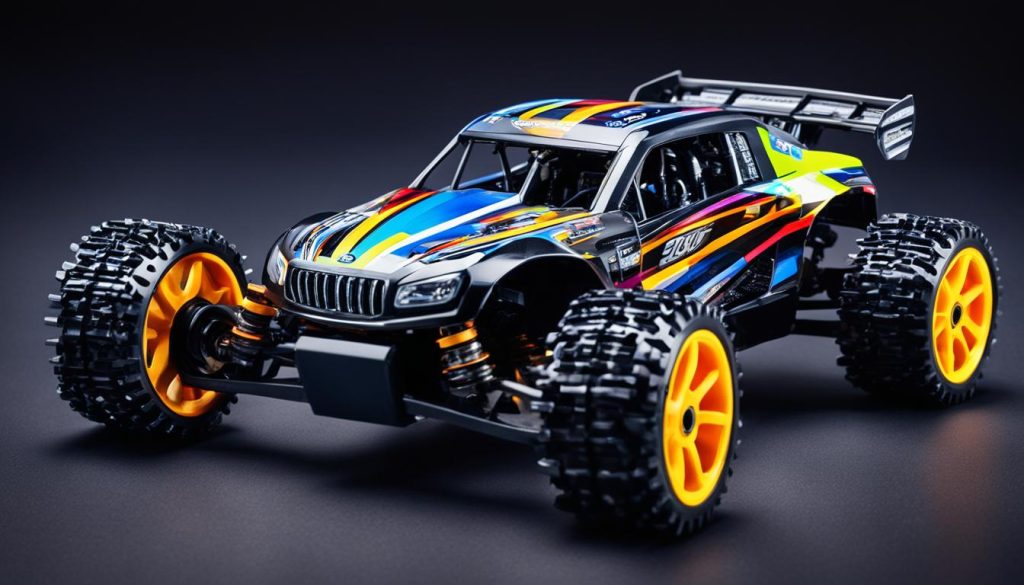
| Gear Ratio | Acceleration | Top Speed |
|---|---|---|
| Small pinion gear, large spur gear (higher gear ratio) | Slower | Faster |
| Large pinion gear, small spur gear (lower gear ratio) | Faster | Slower |
The Influence of Size on the Speed of 2.4GHz RC Cars
The size of a 2.4GHz RC car plays a crucial role in determining its speed. Larger and heavier RC cars tend to have lower acceleration due to the increased weight. On the other hand, smaller and lighter RC cars have better acceleration capabilities and can reach higher speeds. It’s all about finding the right balance between size and acceleration to achieve optimal performance.
When it comes to RC cars, size matters. Larger RC cars may have an advantage when it comes to stability and handling, but their heavier weight can negatively impact acceleration and overall speed. Smaller RC cars, on the other hand, are lighter and more nimble, allowing for quicker acceleration and ultimately higher top speeds.
Imagine a small lightweight car versus a larger heavy-duty truck. The smaller car can easily accelerate and reach higher speeds due to its lower weight. The same concept applies to RC cars. Smaller cars have less mass to move, resulting in faster acceleration and greater speed potential.
In addition to weight, the size of an RC car also affects its aerodynamics. Smaller cars typically have sleeker designs with reduced wind resistance, allowing for better speed capabilities. On the other hand, larger RC cars may have a bulkier build, which can create more drag and hinder their ability to reach higher speeds.
Optimizing the size of an RC car involves finding the right balance between weight and performance. Hobbyists and enthusiasts can experiment with different sizes to determine the optimal configuration for their desired speed and acceleration.
It’s important to note that the relationship between size and speed is not linear. While smaller RC cars generally have better acceleration and higher top speeds, there are limits to how small a car can be without sacrificing stability and control. Finding the sweet spot between size and performance is key for achieving the desired speed without compromising other important factors.
Overall, the size of a 2.4GHz RC car has a significant impact on its speed. By carefully considering the size and weight of the car, enthusiasts can optimize their RC car’s performance and experience the thrill of high-speed racing.
| Size | Acceleration | Top Speed |
|---|---|---|
| Smaller RC Cars | Excellent | High |
| Larger RC Cars | Reduced | Lower |
The Role of the Motor in the Speed of 2.4GHz RC Cars
The type of motor used in a 2.4GHz RC car plays a crucial role in determining its speed. There are two main types of motors commonly found in RC cars: brushed motors and brushless motors. Each motor type has distinct characteristics that can affect the overall performance of the RC car.
Brushed motors have been used in RC cars for many years and are known for their simplicity and affordability. These motors consist of a rotating armature (rotor) surrounded by a fixed magnetic field (stator). The brushes and commutator on the rotor supply power to different segments of the armature, creating rotational motion.
However, when it comes to speed, brushless motors are preferred over brushed motors. Brushless motors utilize advanced technology that eliminates the need for brushes and commutators. Instead, they use a series of magnets on the rotor and multiple coils on the stator to generate torque and propel the RC car forward.
“Brushless motors are generally faster than brushed motors due to their reduced friction and higher efficiency.”
Brushless motors have several advantages that contribute to their higher speeds:
- Reduced Friction: The absence of brushes in brushless motors minimizes friction, resulting in smoother and more efficient rotation. This allows the motor to generate greater speed and acceleration.
- Higher Efficiency: Brushless motors convert more electrical energy into mechanical energy without wasting power on brush-related mechanisms. As a result, they deliver higher performance and speed compared to brushed motors.
- Less Heat and Noise: Brushless motors generate less heat and noise due to their improved design and lack of brush-related mechanisms. This makes them well-suited for high-speed RC cars, as excessive heat and noise can negatively impact performance.
In summary, the motor type is a critical factor in determining the speed of a 2.4GHz RC car. While brushed motors are affordable and widely used, brushless motors offer superior performance and speed due to their reduced friction, higher efficiency, and quieter operation. When aiming for high speeds, choosing an RC car with a brushless motor can provide a significant advantage.
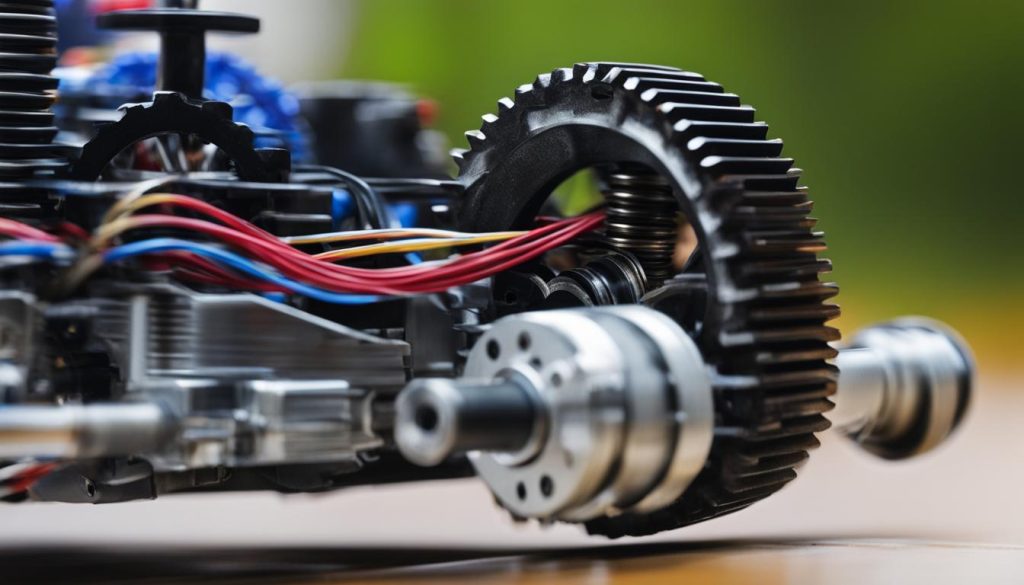
Battery Power and Speed of 2.4GHz RC Cars
The speed of a 2.4GHz RC car is not only determined by its motors and gears but also by the type of batteries used. While lithium-based or nickel-based batteries are commonly used in RC cars, upgrading to lithium polymer batteries can significantly enhance the speed and performance of the vehicle.
Lithium polymer batteries have several advantages over other battery types. Firstly, they have low internal resistance, allowing for a more efficient transfer of power to the motors. This means that the motors can draw more current from the batteries, resulting in increased speed and acceleration.
Another benefit of lithium polymer batteries is their higher runtime. With a larger capacity, these batteries can power your RC car for a longer duration, giving you extended playtime before needing to recharge. This is especially beneficial for speed enthusiasts who want to push their RC cars to the limit without interruption.
To optimize the speed and performance of your 2.4GHz RC car, consider upgrading to lithium polymer batteries. These batteries offer a balance between power and runtime, allowing you to extract the maximum speed from your vehicle.
| Battery Type | Advantages |
|---|---|
| Lithium Polymer Batteries |
|
| Lithium-based Batteries |
|
| Nickel-based Batteries |
|
Upgrade to lithium polymer batteries to unleash the full potential of your 2.4GHz RC car. With low resistance, high runtime, and lightweight design, these batteries offer the perfect balance of power and efficiency for maximum speed and performance.
Surface Conditions and RC Car Speed
The surface on which a 2.4GHz RC car is driven plays a significant role in its speed. Different surfaces can greatly affect how an RC car performs and its top speed. Smooth surfaces, in particular, provide ideal conditions for maximizing the speed of an RC car.
RC cars on smooth surfaces experience less friction and resistance, allowing them to reach higher speeds compared to uneven surfaces. The lack of bumps, cracks, or debris on a smooth surface enables RC cars to maintain better traction and grip, resulting in improved acceleration and top speed.
To accurately measure the top speed of an RC car, it is essential to choose a smooth surface. This ensures that the car can reach its maximum potential without any external factors slowing it down. Using a speedometer or speed gun on a smooth surface provides precise readings, allowing RC enthusiasts to compare the speeds of different cars and track their performance improvements over time.
“The surface you choose for testing your RC car’s top speed is crucial. Opting for a smooth surface eliminates any variables that could hinder or alter your car’s performance.”
– RC Racing Expert
It’s important to note that while smooth surfaces optimize RC car speed, it’s also essential to consider the surface type when selecting an RC car for specific applications or environments. Some RC cars may be better suited for off-road or rough terrain, while others excel on smooth tracks or indoor surfaces.
Remember, when aiming for top speeds, selecting the right surface is key to achieving accurate measurements and unleashing the full potential of your 2.4GHz RC car.
Extreme Speed of RC Cars
For some RC car enthusiasts, pushing the limits of speed is a thrilling pursuit. By modifying their cars, they are able to achieve mind-blowing speeds that surpass 100 mph. Although RC cars with such extreme speeds are rare, they are a testament to the dedication and expertise of these passionate individuals.
Modifying an RC car to reach such breathtaking speeds requires extensive modifications. These modifications can include upgrading the motor, adjusting the gearing, and optimizing various components for maximum performance. It’s a meticulous process that often involves fine-tuning every aspect of the car to minimize drag, increase power, and ensure optimal aerodynamics.
RC car racing events are where high-speed RC cars truly shine. These events showcase the fastest and most advanced RC cars in action. Designed specifically for maximum performance, these racing machines are capable of achieving incredible speeds on the track.
“RC car racing is a thrilling sport that combines skill, precision, and the pursuit of speed. Watching these high-speed RC cars maneuver through tight turns and straightaways is a sight to behold.” – RC Car Racing Enthusiast
RC car racing provides a platform for drivers to compete and break records. Speed records are constantly being pushed, with talented drivers and their modified RC cars reaching new heights in the pursuit of speed. Races are filled with adrenaline and excitement as competitors push themselves and their cars to the limit.
It’s important to note that achieving extreme speeds requires considerable knowledge, experience, and skill. Novice RC car enthusiasts should approach modifications with caution, ensuring they have a thorough understanding of the potential risks involved. Safety should always be a top priority when modifying an RC car for speed.
This image showcases a modified RC car in action, demonstrating its incredible speed and agility on the track. The thrill of witnessing these high-speed machines in motion is truly captivating.
Conclusion
In summary, the speed of a 2.4GHz RC car is influenced by various factors, including price, motor type, gearing, size, surface conditions, and battery power. Lower-priced RC cars generally have lower top speeds, while higher-priced hobby-grade RC cars can achieve faster speeds. However, it is important to note that modifying an RC car, particularly by upgrading the motor and adjusting the gearing, can significantly enhance its speed.
When aiming for top speeds, it is crucial to consider the surface conditions on which the RC car will be driven. Smooth surfaces provide better traction and allow for faster speeds, whereas uneven surfaces may affect the car’s performance. Additionally, battery power plays a vital role in determining the speed of an RC car. Upgrading to lithium polymer batteries can provide higher speed and longer runtime.
While extreme speeds exceeding 100 mph can be achieved by modifying RC cars, it’s important to remember that such speeds are rare and typically require extensive customization. Commercially available RC cars may not reach these extreme speeds. Therefore, it is essential for RC car enthusiasts to understand the impact of various factors and make informed choices when striving for optimal speed.
FAQ
How fast is a 2.4GHz RC car in mph?
The speed of a 2.4GHz RC car can vary depending on factors such as price, modifications, motor type, gearing, and size. Lower-priced models can reach speeds of 10-35 mph, while higher-priced hobby-grade RC cars can reach speeds of 50-70 mph. Modified RC cars can even exceed 100 mph.
How does the 2.4 GHz frequency control RC cars?
RC cars controlled by the 2.4GHz frequency use transmitters and receivers to send commands. This frequency allows for the control of multiple cars simultaneously without the need to manually change frequencies. Once paired, no other radio equipment can interfere with the functioning of the RC car, and it is less susceptible to interference from other radio devices.
What factors can affect the speed of a 2.4GHz RC car?
The speed of a 2.4GHz RC car can be influenced by various factors such as modifications made to the car (upgrading to a brushless motor and adjusting the gearing), the size and weight of the car, the type of motor and batteries used, and the surface on which the car is driven.
How can I measure the speed of a 2.4GHz RC car?
The speed of a 2.4GHz RC car can be measured using a speedometer or a speed gun. These devices provide accurate readings of the car’s speed. If the manufacturer does not specify the maximum speed, using a speedometer or speed gun can help determine the actual speed of the RC car.
Does the price of a 2.4GHz RC car affect its speed?
Generally, lower-priced RC cars have lower top speeds, ranging from 10-35 mph. In contrast, higher-priced hobby-grade RC cars can reach faster speeds, ranging from 50-70 mph. It is rare to find commercially available RC cars with speeds exceeding 100 mph unless they are modified.
How does gearing impact the speed of a 2.4GHz RC car?
Gearing plays a significant role in the speed and acceleration of a 2.4GHz RC car. Adjusting the gear ratio by modifying the pinion gear and spur gear can affect acceleration and top speed. Changing to a smaller pinion gear and a larger spur gear results in increased acceleration and reduced top speed, while using a larger pinion gear and a smaller spur gear increases top speed and reduces acceleration.
Does the size of a 2.4GHz RC car affect its speed?
The size and weight of a 2.4GHz RC car can impact its speed. Generally, smaller and lighter RC cars have better acceleration but may have lower top speeds due to their reduced weight. Larger and heavier RC cars typically have lower acceleration but may have higher top speeds due to their increased weight.
How does the motor type affect the speed of a 2.4GHz RC car?
The type of motor used in a 2.4GHz RC car can impact its speed. Brushless motors, which have reduced friction and higher efficiency compared to brushed motors, are generally faster. Brushless motors also generate less heat and noise, making them better suited for high-speed RC cars.
Can battery power affect the speed of a 2.4GHz RC car?
The type of batteries used in a 2.4GHz RC car can affect its speed. While lithium-based or nickel-based batteries are commonly used, upgrading to lithium polymer batteries can provide more speed. Lithium polymer batteries have low resistance and a higher runtime, maximizing the speed and performance of the RC car.
Does the surface affect the speed of a 2.4GHz RC car?
The surface on which a 2.4GHz RC car is driven can impact its speed. RC cars typically travel faster on smooth surfaces compared to uneven surfaces. It is important to choose a smooth surface when testing the top speed of an RC car for accurate measurements. Surface conditions can also affect traction and grip, further influencing the car’s speed.
Can RC cars achieve extreme speeds?
Some RC car enthusiasts push the limits of speed by modifying their cars. Modified RC cars can achieve speeds well over 100 mph. However, RC cars with such extreme speeds are rare and typically require extensive modifications. RC car racing events often feature high-speed RC cars that have been specifically designed for maximum performance.
